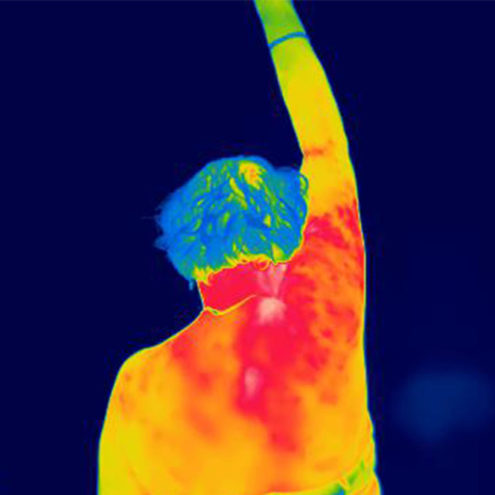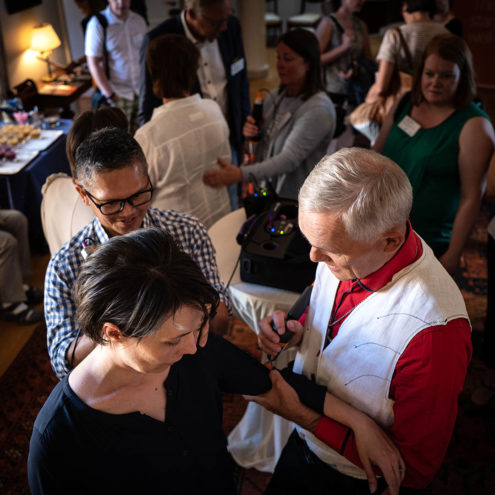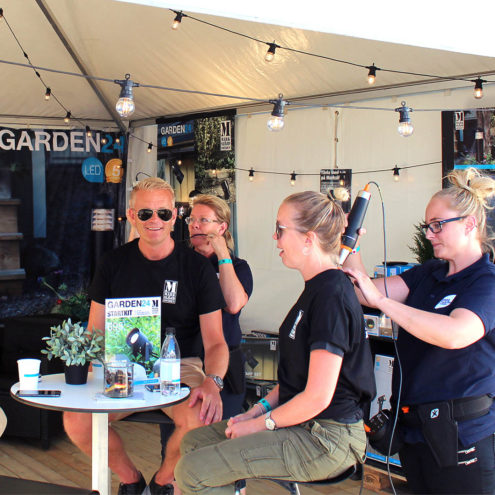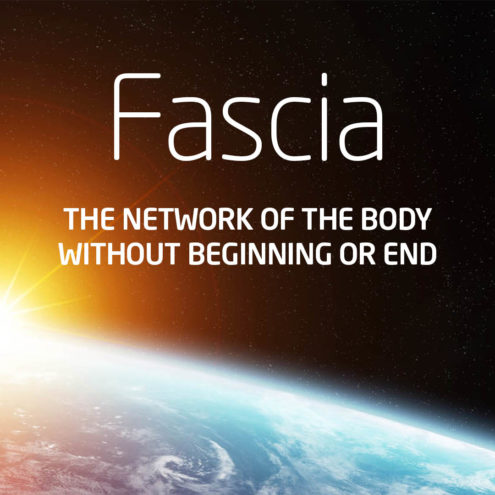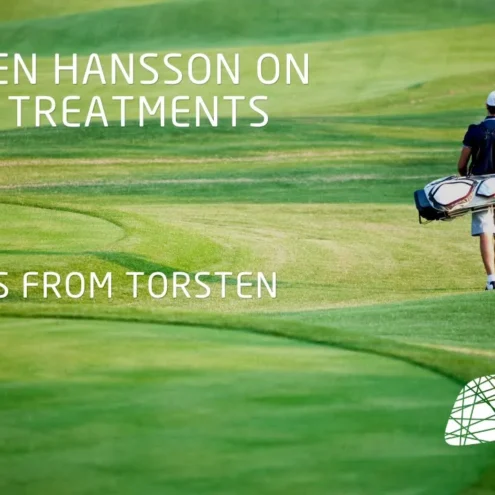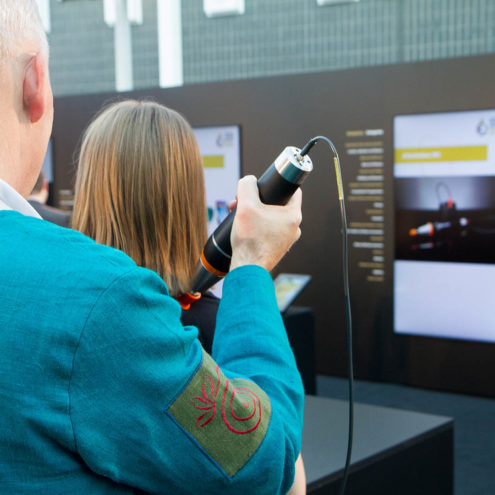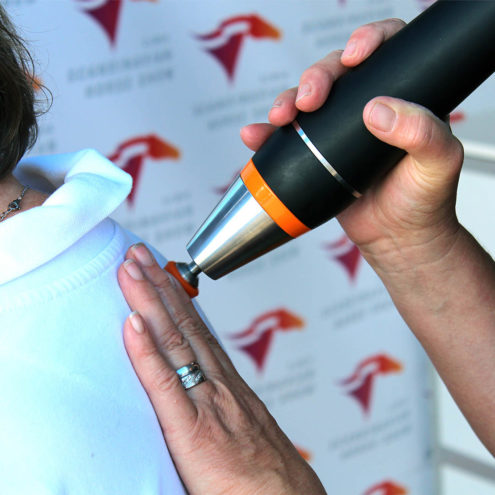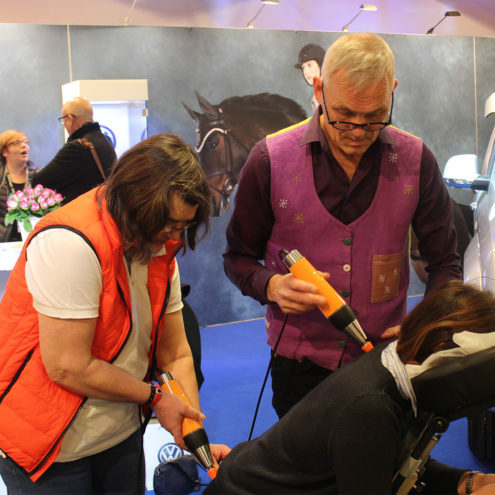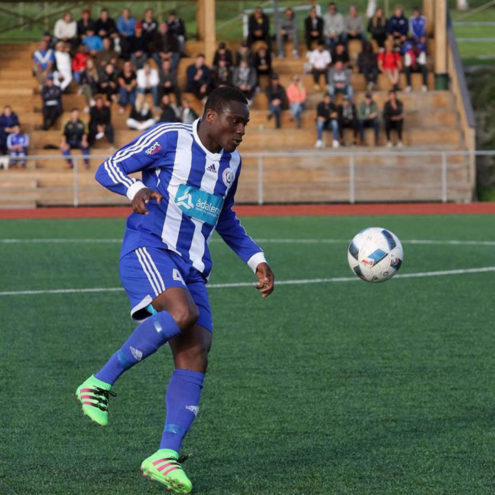Inflammation in the sternum

Inflammation of the sternum, costochondritis or Tietze’s syndrome (Tietze’s disease) is a harmless condition, although acute chest pain can be frightening. The inflammation is in the cartilage that connects the ribs to the sternum. The condition can be both very painful and long-lasting but usually heals on its own. It is common in both men and women of all ages from children to adults.
Inflammation can occur for a variety of reasons and is the body’s way of dealing with an injury. The injury can be obvious, but it can also be small, such as a tear or micro-injury, and can be caused by overexertion, trauma or other overuse.
You could say that Tietze’s syndrome is a variant of costochondritis as both are an inflammation of the sternum but with some differences. Tietze’s syndrome is usually only on one rib while costochondritis has more ribs involved. In Tietze’s syndrome, there is often also a swelling over the affected rib.
Symptoms of inflammation in the sternum
The main symptom is pain in the ribs and chest. The pain is described as acute, sharp, stabbing and aching. There is also a feeling of pressure across the chest. The pain often occurs during deep breathing, movement of the upper body from still to moving, twisting movements and lifting. The pain gets worse with exertion.
Symptoms of costochondritis
Pain in the sternum and thorax
Increased pain when moving and twisting
Pain during deep breaths
Usually more ribs affected
Symptoms of Tietze syndrome / Morbus Tietze
Pain in the sternum and thorax
Increased pain when moving and twisting
Pain during deep breaths
Swelling and tenderness over ribs
Usually only one rib affected
What can cause inflammation of the sternum?
Several things can cause inflammation of the sternum but often it is due to:
Stiffness in the thoracic spine
Stiffness in the chest muscles
Stress
Overexertion or overload
Trauma such as blows, fall injuries or traffic accidents
Prolonged cough
When and where should I seek treatment for sternal inflammation?
As acute chest pain can have more serious causes than inflammation such as cardiovascular disease, especially if the pain is persistent for more than 15 minutes, you should see a doctor in the first instance to rule out serious illness. For inflammation of the sternum, which can take months to self-heal, fascia treatment at a fascia clinic can be very helpful in speeding up healing. You can do this as soon as possible to speed up healing, and it will be easier to heal if you don’t let it go on too long. Prolonged pain can lead to changes in posture and strain that cause new injuries and pain.
The fascia clinics work to balance the body for even load, improved posture and optimal body function. With gentle vibrations, the flow of the fascia is increased and creates the opportunity for the body to self-heal and thus the healing process can be shortened significantly.
What can I do myself in case of inflammation in the sternum
In all healing processes, movement is important and you should therefore not become completely still. However, you should avoid activities that cause pain such as heavy lifting, excessive movements and twisting of the upper body. You can also try warming the area that hurts, as heat increases the flow and circulation of the fascia and the pressure on the pain receptors decreases. Tiger balm can also have a remedial effect. Soft movement exercises and soft stretching of the thoracic spine and chest muscles can also have a positive effect.
Inflammation in the sternum – Exercises
Keep in mind that the exercises should be gentle and not trigger painful conditions.
Stretch chest muscles
Lying on your stomach, position your elbow so it is bent 90 degrees at shoulder height. Rest the ear of the same side against the floor and push off with the other hand from the floor, level with the chest and close to the body. Let your hip follow in a twist towards the ceiling and place the upper leg behind the lower one. For better balance or if you feel tension/pain in your lower back, pull your lower knee towards your stomach.
Stay there for 3-5 minutes, relax and breathe. If you can’t do it all the time, you’re pushing yourself too hard.
Supine rotation of thoracic spine
Lie on one side with your knees bent, think fetal position. Then rotate your torso and head over to the other side, away from the direction of your knees and with your arms outstretched to either side. Try to come down with both shoulder blades facing the floor. Repeat on the other side.
 Search
Search






